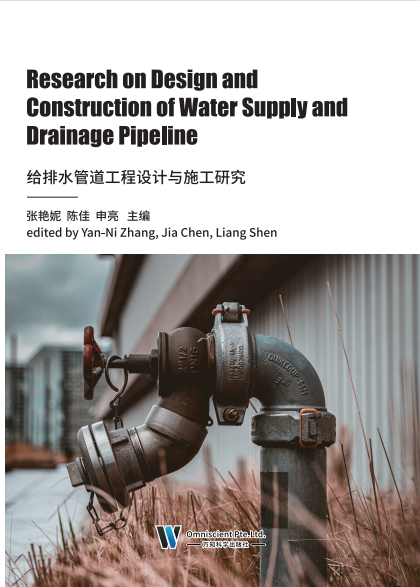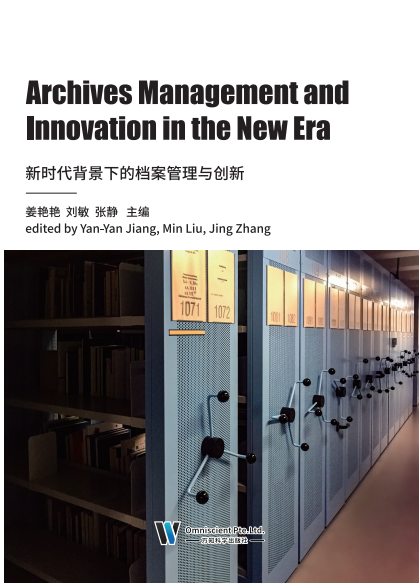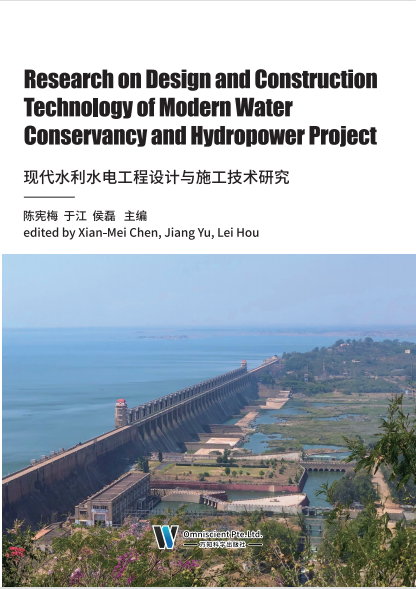
中国经济的发展加速了城市化建设,科技的进步为城市建设提供了良好的基础。 高楼大厦的建造,设计和施工技术都是基础,在工程施工过程中,各环节复杂多变, 要求采用不同的施工技术才能保证施工质量。在这些因素中,排水管道安装是影响居 住的因素之一,如果由于施工技术不过关,专业水平不够,设计模式不完善,都会给 居民带来种种不便。 本书主要是研究给排水管道工程设计与施工,首先从给排水系统概述、给排水系 统组成与分类、给排水工程入手,介绍了给水管道系统的规划与设计、水力计算、水 力模型等;其次分析了排水系统的整体规划设计、污水管道系统的设计计算、雨水管 渠系统及防洪工程设计计算、合流制管渠系统的规划设计、常用排水管渠材料及附属 构筑物、基于海绵城市理念的城市排水设计等;再次深入剖析了建筑给水管道设计计 算、建筑排水管道设计计算以及居住小区给排水管道设计计算、特殊地区给排水管道 设计计算以及综合管廊设计、管线综合设计等;接着,阐释了给排水系统常用管材、 配件、附属构筑物与管道工程常用施工工具、管道加工、管道连接、管道支吊架的安 装等;最后解读了给水排水工程施工现场的成本管理、进度管理、质量管理、安全管 理,以及给排水管道技术信息管理系统、给水管道系统维护与管理、排水管渠系统维 护、排水管道非开挖修复技术的发展与分类等。给排水管道工程是一项综合性的工 作,给排水管道管线之间具有较为复杂的交错性,在设计的时候,要考虑各个方面的 影响因素,任何一个环节出现问题,都有可能造成重复施工的现象。加工工艺欠佳也 会直接影响整个工程项目的产品品质,给建筑整体性构造产生相应的影响,会影响建 筑的稳定性与安全性,减少建筑的整体性承载力。 在本书的策划和编写过程中参考和借鉴了众多前辈的研究成果,在此表示衷心的 感谢。因时间紧迫以及本人水平有限,对一些相关问题的研究不透彻,书中有疏漏是 无法避免的,恳请各位专家、同行和广大读者多加批评和指正,以便我们进行修订和 完善。

随着我国社会主义市场经济的进步与发展,企业需要不断提高管理的要求和标 准,其中人力资源管理对于企业内部的人力资源配置和提升人才利用率具有重要作 用。随着信息化时代的到来,以及互联网技术的不断发展,“互联网+”时代对于企业 人力资源管理工作提出了新的标准和要求。企业需要将互联网信息技术有效运用到人 力资源管理工作中,使其形成比较完美的融合,促进人力资源的整合和优化,借助互 联网技术提高企业人力资源的更新,促进人力资源管理效率和效益的提升。 本书分为九个章节,从多个方面和角度对互联网时代的人力资源管理的各个环节 和要点进行了详细的分析与阐述,发现其中存在的各种问题,并提出了相应的建议和 措施,从而为我国企事业单位人力资源的充分利用贡献一份力量。

新时代背景下,先进科学技术冲击着整个世界,改变着人们的生活、工作和思 维方式,对档案管理工作也产生了很大的冲击和影响,是对档案部门的档案管理能力 和水平的全新考验。新时代下档案管理模式变化的研究,有利于保护各类档案文化资 源,优化档案业务流程,挖掘档案增值信息,加强档案管理机构的职能建设,达到促 进档案事业发展的目的。为科学应对新时代档案管理模式的变化,寻求档案管理的有 效路径,需要从拓宽档案资源的收集类别、完善档案资源的建设主体、改变档案资源 采集方式和科学整合档案资源来加强档案资源聚集,建立覆盖人民群众的档案数据资 源体系。大数据时代的到来对档案管理工作产生了巨大的冲击和影响。 面对数据资源来袭,整个社会、各行各业都将面临对巨量而复杂的数据进行高效 管理的困难局面,人们越来越认识到对自身产生和拥有的大量数据进行有效管理的必 要性、重要性和迫切性,档案学领域也不例外。在信息数字化时代,档案管理已逐渐 从传统的思想观念中解放出来,在政策制定、方法改进、技术提升、设备配置、人员 结构等方面发生巨大改变,并在不断进步和完善。而新时代的到来,社会和网络每天 产生的档案信息的数量和种类与过去完全不可比拟。因此,档案界很有必要深入探讨 一下新时代背景下的档案管理工作发生了怎样的改变,改变传统的思维方式和管理模 式,促使档案管理水平更上一层楼。 本书内容在分析档案新时代管理内涵的基础上探讨档案新时代管理对策,以为新 时代档案管理提供参考。现阶段,档案越来越受到社会的关注和重视,对档案管理也 提出了更高的要求,但传统档案管理受时间和空间限制,难以满足当前需求,加强新 时代建设和创新管理迫在眉睫。档案新时代信息化建设是一项系统性工程。随着新时 代的来临,信息技术在社会各领域都发挥重要作用,信息技术的发展使档案信息化管 理成为档案管理的发展趋势。档案新时代信息化管理利于档案长期保存,在提高档案 管理效率的基础上能实现档案资源的共享,进而提升档案的利用价值。

水是国民经济的命脉,也是人类发展的命脉。水利水电建设关乎国计民生,水利 水电工程是我国最重要的基础设施工程建设之一,对我国经济发展、人民日常生活都 具有重要作用。 在我国社会经济发展的推动下,我国水利水电工程蓬勃发展,取得了一定的成 就。随着我国人民生活水平的不断提高,对水利水电工程的建设也提出新的要求。为 适应时代背景下的水利水电工程发展要求,实现水利水电工程的现代化,必须确保水 利水电工程的质量符合标准。 为了全面实现对水利资源的充分利用,以在缓解能源资源危机的基础上,实现我 国经济的可持续发展,国家加大了对水利水电工程项目的投入力度,进而使得相应的 工程施工项目逐渐增多。在此背景下,为了全面确保这一工程的施工质量,就需要科 学且合理地实现对基础施工技术的应用,以在满足水利水电工程施工实际要求的基础 上,确保水利水电工程能够造福于社会,实现自身综合效益的发挥。 本书在注重基础知识的同时,结合水利水电工程施工的实际,在编写过程中突出 实用性,力求为水利水电工程施工技术人才的培养起到推动作用。本书可供水利工程 专业人员参考阅读。

“民以食为天,食以安为先”,食品是人类赖以生存的基本物质条件。随着科技 的不断进步,食品工业得到飞速发展,食品的种类也越来越丰富。伴随生活水平的提 高,人们对食品的要求已不再满足于数量和质量,对食品的安全提出了更高的要求。 然而近年来,食品安全问题不断暴露,成为影响国民健康以及国际贸易的重要问题, 食品安全受到了政府监管部门和消费者的高度重视。食品安全检测技术作为保障食品 安全的重要支撑技术,也有了更高、更新的要求。 本书撰写重点突出三个特色:一是内容丰富,全面、系统地论述了现代食品安全 与微生物之间的相互关系;二是在理论研究的基础上,注重实用性和可操作性;三是 结构紧凑,层次分明,本书不仅各段落、各章节环环相扣、层层深入,同时尽可能用 简单易懂的语言把食品安全论述得全面、透彻。 本书主要对食品安全检测的分类及基本要求,样品处理技术与结果分析等内容进 行了较为详尽的阐述与评价,对全面掌握食品安全检测技术起到指导作用。 本书从食品安全分析中样品采集与预处理方法着手,重点介绍现代食品安全检测 新技术的基本原理、结构及其在食品品质分析、农药和兽药残留检测、食品中毒素分 析、食品添加剂检测、食品中有害元素及其他污染物检测、食品的腐败物质与引起食 源性疾病物质检测中的应用。本书适合高等院校食品科学与工程、食品质量与安全及 相关专业本科生和研究生使用,也可供食品行业的技术人员参考。 现代食品安全的科学技术和理论知识发展迅猛,国家法规和技术标准在不断发展 变化,同时由于水平和经验所限,书中的不足和疏漏之处敬请读者给予批评指正。